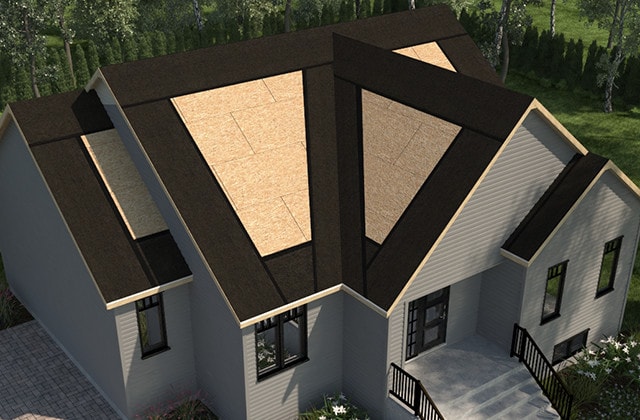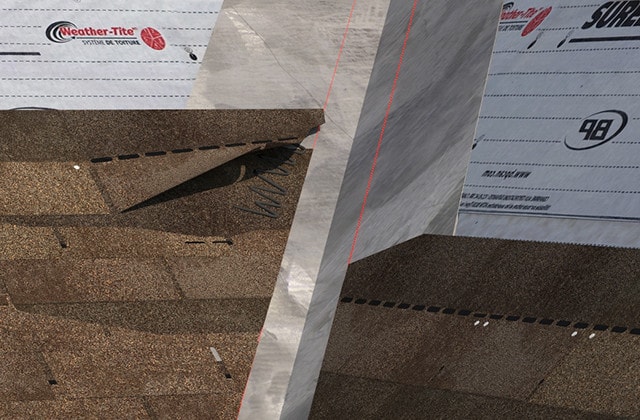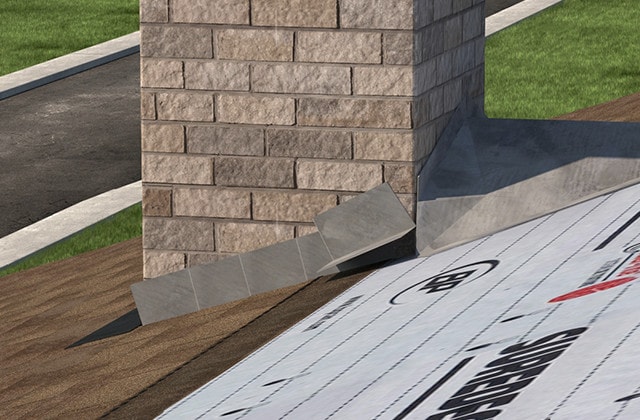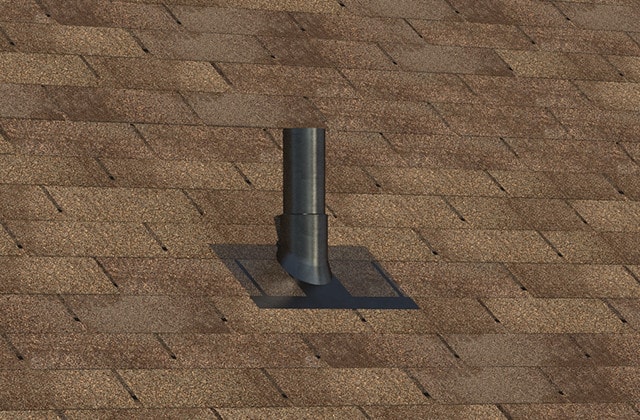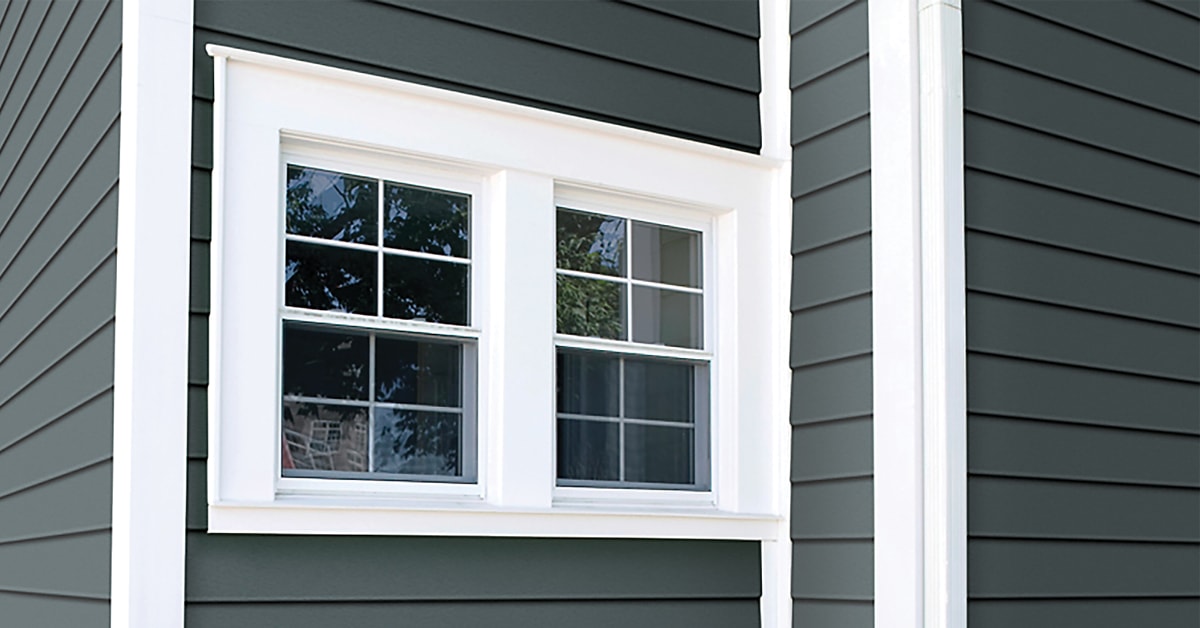Remove the old shingles
- 1.1 - Remove the old shingles and roofing felt with a roofer's shovel. Pry out nails.
- 1.2 - Sweep the roof as clean as possible and run a scraper over the decking to check for nails that might have been missed.
- 1.3 - Inspect the plywood or particle board and replace any damaged or rotten boards. Panels must be at least ½" thick.
- 1.4 - Nail down or screw in any boards that are raised or loose.
- 1.5 - Install a metal or vinyl drip edge directly on the plywood the length of the eaves. Nail at 12" intervals and lap each section by 2". Use snips to cut the corners.
- 1.6 - Verify that soffit and ridge vents are not obstructed.











